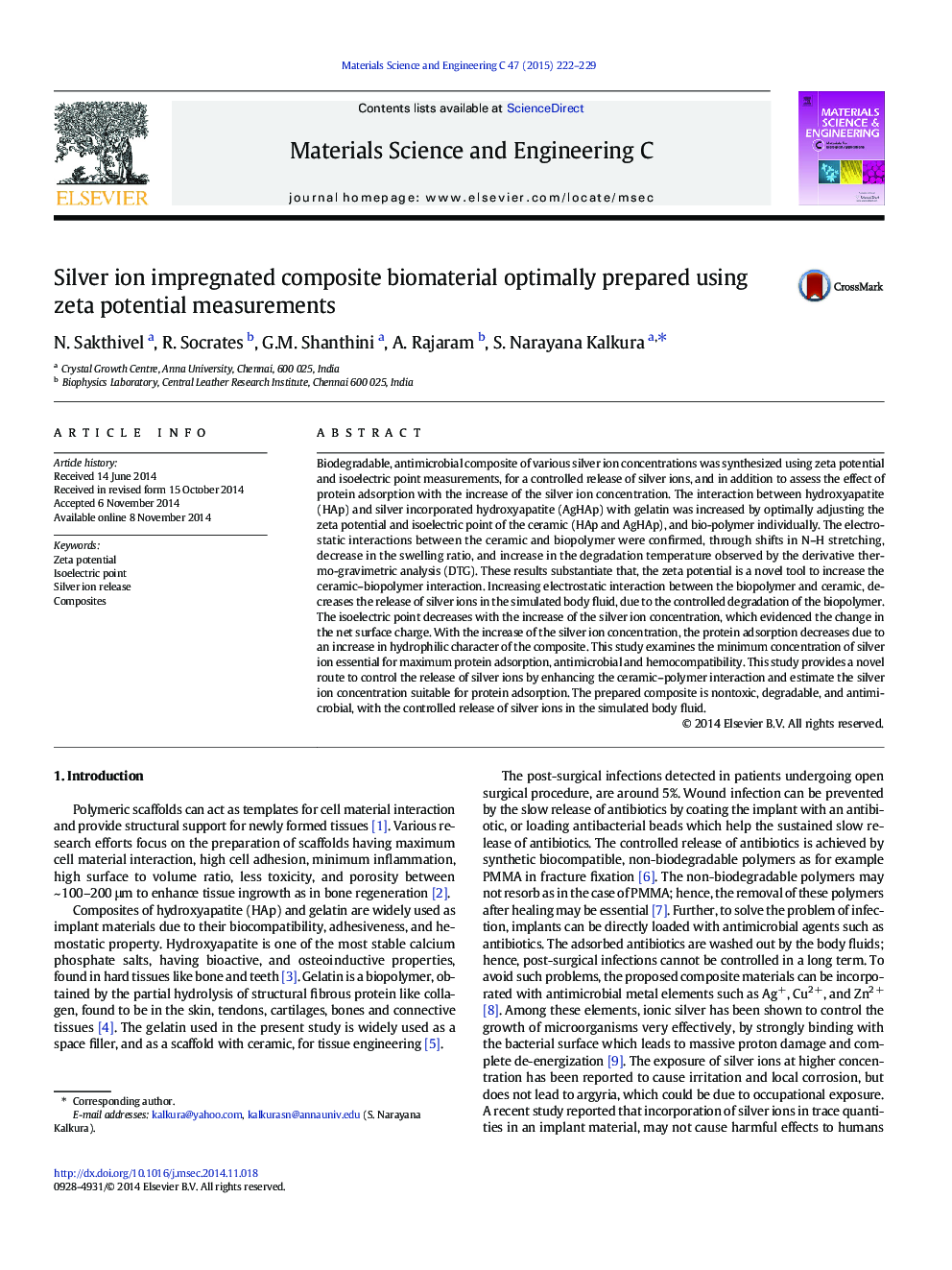| Article ID | Journal | Published Year | Pages | File Type |
|---|---|---|---|---|
| 1428396 | Materials Science and Engineering: C | 2015 | 8 Pages |
•First report on analysis of ceramic–polymer interaction through zeta potential•Novel synthesis of polymer–ceramic composites with controlled silver ion release•Composite with silver ions, much below toxic level with antimicrobial property•Confirmation of adsorbed silver ions by zeta potential and isoelectric point
Biodegradable, antimicrobial composite of various silver ion concentrations was synthesized using zeta potential and isoelectric point measurements, for a controlled release of silver ions, and in addition to assess the effect of protein adsorption with the increase of the silver ion concentration. The interaction between hydroxyapatite (HAp) and silver incorporated hydroxyapatite (AgHAp) with gelatin was increased by optimally adjusting the zeta potential and isoelectric point of the ceramic (HAp and AgHAp), and bio-polymer individually. The electrostatic interactions between the ceramic and biopolymer were confirmed, through shifts in N–H stretching, decrease in the swelling ratio, and increase in the degradation temperature observed by the derivative thermo-gravimetric analysis (DTG). These results substantiate that, the zeta potential is a novel tool to increase the ceramic–biopolymer interaction. Increasing electrostatic interaction between the biopolymer and ceramic, decreases the release of silver ions in the simulated body fluid, due to the controlled degradation of the biopolymer. The isoelectric point decreases with the increase of the silver ion concentration, which evidenced the change in the net surface charge. With the increase of the silver ion concentration, the protein adsorption decreases due to an increase in hydrophilic character of the composite. This study examines the minimum concentration of silver ion essential for maximum protein adsorption, antimicrobial and hemocompatibility. This study provides a novel route to control the release of silver ions by enhancing the ceramic–polymer interaction and estimate the silver ion concentration suitable for protein adsorption. The prepared composite is nontoxic, degradable, and antimicrobial, with the controlled release of silver ions in the simulated body fluid.
Graphical abstractFigure optionsDownload full-size imageDownload as PowerPoint slide
